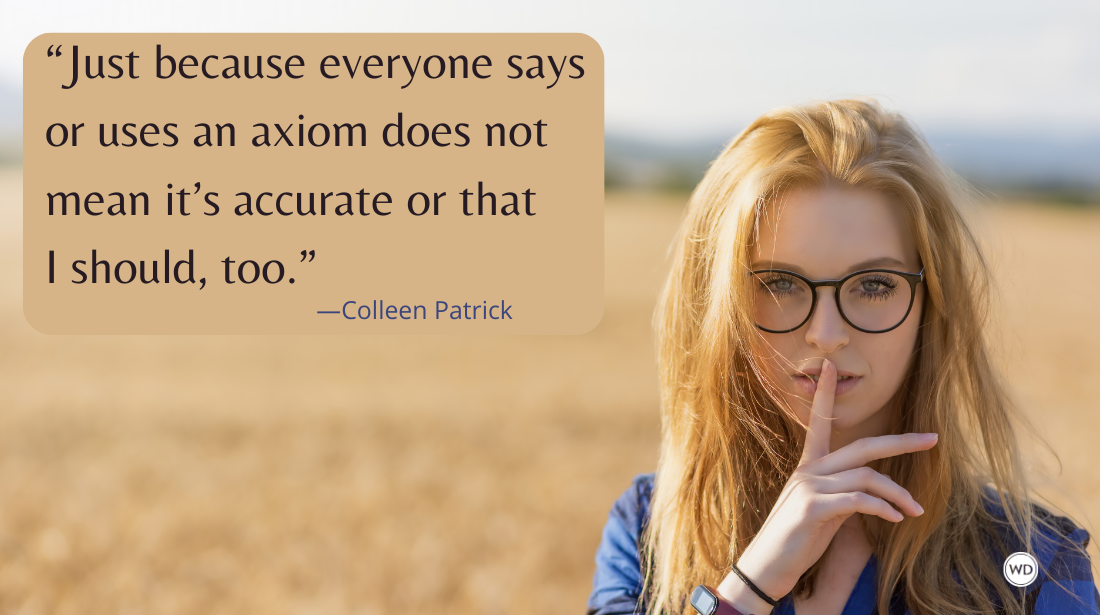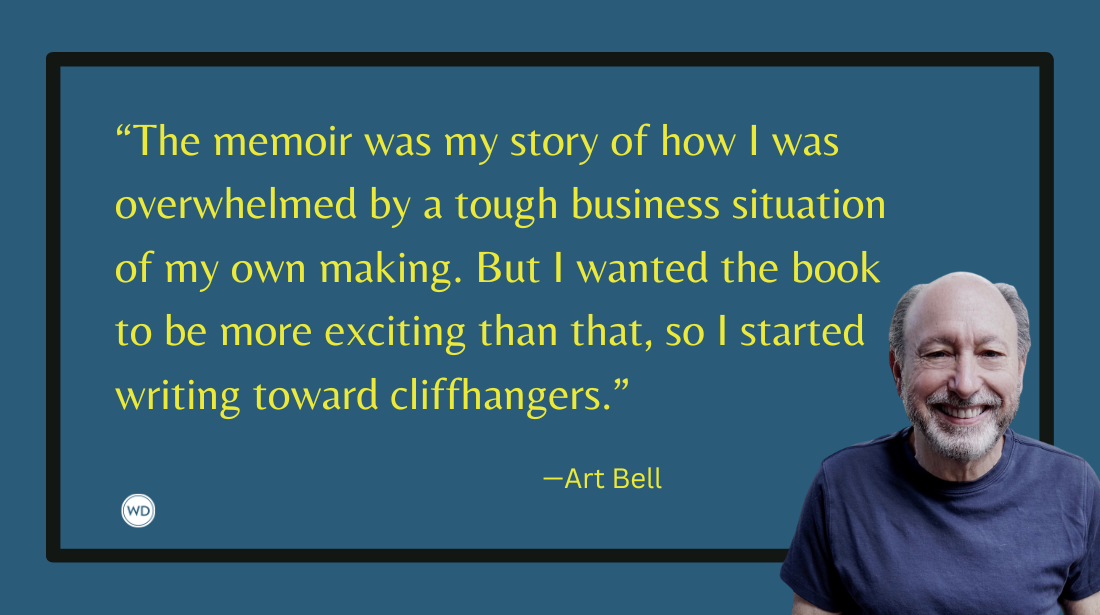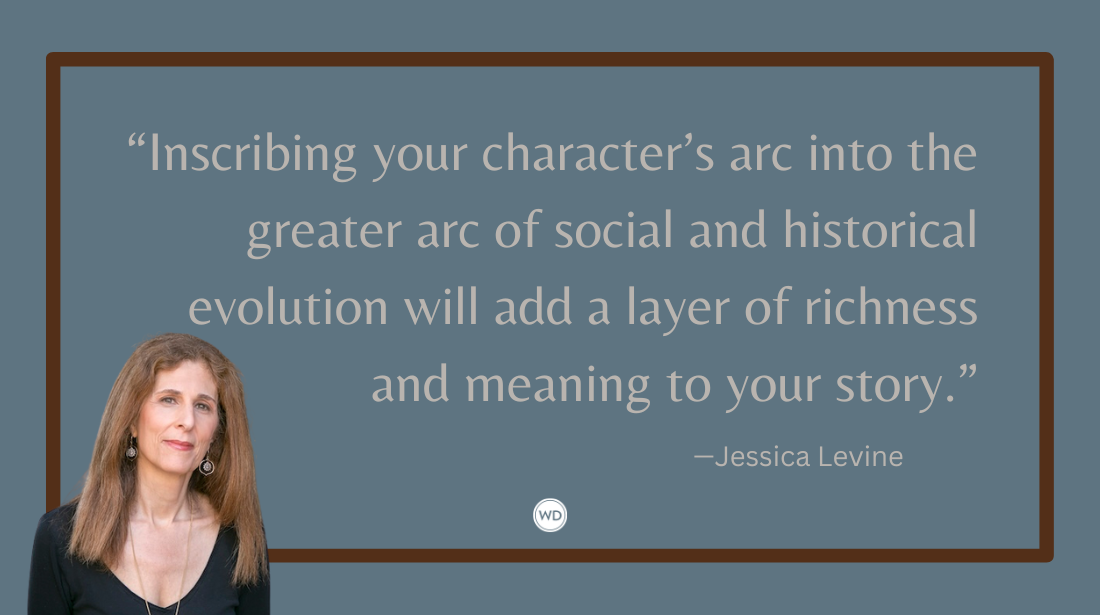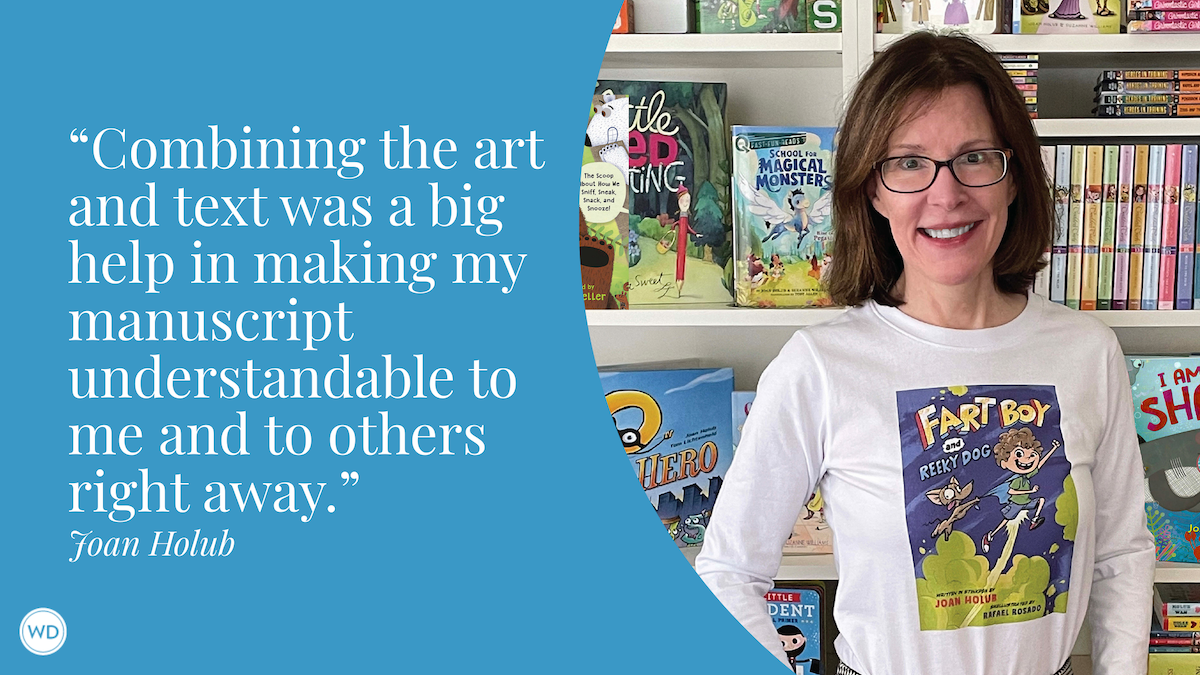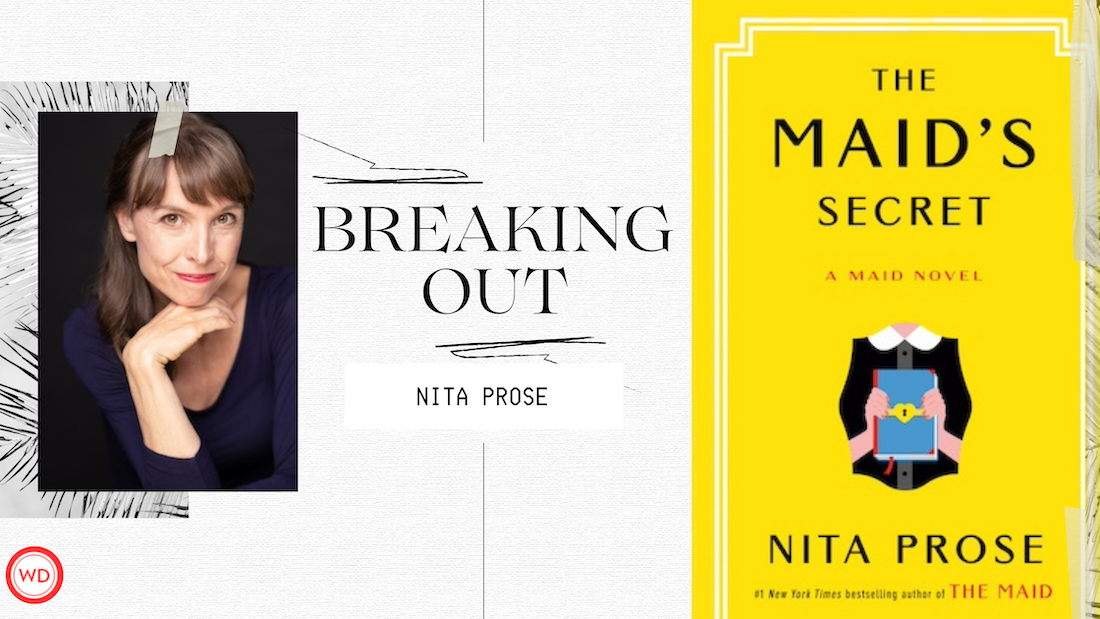6 Ways to Write Better Bad Guys
With the following tips in mind, reread your manuscript with an eye toward making your antagonist as compelling as your protagonist.
Dear Author: We antagonists, villains, bad guys, femme fatales—call us what you will—don’t get no respect. We’re overlooked, underdeveloped and squeezed into a space that would cramp your average gerbil. When we get short shrift, your books aren’t nearly as good as they could be. They lack tension and depth. They’re forgettable. Not that I’m one for pointing fingers, but I’ve got to tell you, it’s your fault. Who was given pages and pages of backstory in your last novel? That’s right—the protagonist. Whose motives and character arc were fully fleshed out? Right again—the so-called “good” guy’s. Who did you “interview” and construct a character bible for? Yeah, him again. Well, I don’t mind getting second billing, but I have to point out that if you gave readers a chance to truly know and understand me, your books would be a lot more memorable and engaging. We might even get a movie deal, like my idol, Hannibal Lecter.
Sincerely, Eva N. Carnate
I don’t know how the above email got into my inbox, but it caught my attention immediately. Did Eva have a point? It didn’t take me long to review my work-in-progress, analyze some novels I’d read recently and realize that she did. Many authors are guilty of discriminating against their antagonists. Yet, they’re just as important to good stories as the protagonists are. If your antagonist is not fully realized, lacks depth or is a caricature of evil, your story will suffer.
This guest post is by Laura DiSilverio. DiSilverio is the author of the Swift Investigations, Mall Cop and Readaholics mystery series.
After twenty years as an Air Force intelligence officer – serving as a squadron commander, with the National Reconnaissance Office, and at a fighter wing – she retired to parenting and writing full-time.
Follow her @LauraDiSilverio.
Luckily, transforming your antagonist from a one-dimensional paper doll into a force to be reckoned with—and remembered—is completely possible if you implement a few simple but powerful methods for creating antagonists and expanding their roles. You can build a worthy adversary during the outlining process or beef one up when you revise your already completed draft. It’s never too late.
The antagonist is, quite simply, the person who acts to keep your protagonist from achieving his goals. Note the key words person and acts. I’m using person here as a catchall for a sentient being or creation of any kind that is capable of emotion and has the intellectual ability to plot against your protagonist. Thus, a personified car (as in Stephen King’s Christine) could be an effective antagonist, but an abstraction such as “society” or “Big Pharma” cannot. (More on this later.)
The antagonist must act to prevent your heroine from achieving her goals, whether that action is whispering reminders that she’s totally useless, plunging a knife into her back or anything in between. The type of action your antagonist takes will depend on his nature and the kind of story you’re writing. But your story must have an antagonist. (In some stories—Dr. Jekyll and Mr. Hyde comes to mind—the protagonist is actually his own antagonist.) Without an active antagonist, your hero could take a leisurely Sunday stroll toward his goal. Lacking the obstacles a worthy antagonist would provide, he would also lack the opportunity for growth or the necessity to change, and his character arc would flatline (as would your sales).
With the following tips in mind, reread your manuscript with an eye toward making your antagonist as compelling as your protagonist. Some effort on your part could even put your villain in the heady company of Professor Moriarty, the White Witch, Simon Legree and Nurse Ratched.
1. Remember that Antagonists are people, too.
I stop reading novels in which the antagonist is obviously nothing more than a device to move the plot in a certain direction. If I can’t empathize with the antagonist, believe in her motives or understand why she’s dishing out evil, I put the book aside. Flesh out your antagonist. Give us an origin story (how she became the way she is) or show that she regrets something and might change if given a chance.
If working with a nonhuman antagonist, personify him at least a little bit. Think of Frankenstein’s loneliness, HAL’s (the computer in 2001: A Space Odyssey) jealousy or Shere Khan’s hatred of the “man cub” (The Jungle Book). Show the antagonist doing something nice. Even villains love their mothers or cockapoos, volunteer at soup kitchens or help snow-stuck motorists push their cars out of intersections. Do this early on. Give him believable, even laudable, motives.
Inspector Javert from Victor Hugo’s Les Misérables is a strong antagonist because his obsession with finding Valjean stems from his belief that stealing is wrong. How many readers would disagree with that? Javert’s insistence that theft is always, without exception, wrong, however, turns his crusade into persecution. His inability to believe that good and evil can coexist in a single man leads him to suicide. His death is one of the story’s tragedies because he has been so thoroughly developed as a character and because we have, from the beginning, understood his motives and his flaws.
2. Eschew the totally evil antagonist (except, possibly, in some horror or monster stories).
Pure evil is dull, unbelievable and predictable. Readers cannot relate to it. Sometimes evil characters devolve into cartoons and become jokes, thus killing suspense or tension. Other times they’re boring: Yeah, yeah, the serial killer who tortured small animals as a child and is now stalking women that remind him of his mother… yawn. One way to prevent a truly dark character from becoming a caricature is to make her a viewpoint character—because no character is the embodiment of evil in her own mind. No one is the villain in his own story. George R.R. Martin did this effectively in his A Song of Ice and Fire series. In its first book, A Game of Thrones, Jaime and Cersei Lannister, the incestuous brother and sister, seem to be evil personified, the characters readers love to hate. In subsequent books, however, they become viewpoint characters, making it difficult not to empathize with them.
If your book’s structure makes it impossible to show the antagonist’s viewpoint, place one of the viewpoint characters in the antagonist’s position and have him try to understand his perspective. Perhaps your heroine is struggling to find day care for her infant while your villain is looking at nursing homes for his aging father. Or they could both lose something dear to them, or confront job-related problems. It could even be something small: Your protagonist could get stuck in a traffic jam, while your antagonist’s flight is delayed by the weather. The point is to show similarity, humanity and an overlap of feelings and experience between the protagonist and the antagonist. This will enlarge the reader’s perception of the antagonist, even if subconsciously.
10 Crime Fiction Writing Resources for One Low, Bundled Price
Learn the necessary tools, techniques, and devices to keep
your readers breathlessly turning pages and write and publish
your very own crime, thriller, or suspense novel.
Order Now!
3. If you’re tempted to say your antagonist is a corporation, disease or war—don’t.
Abstractions make for distant, unrelatable antagonists. If you think “organized religion” or “corporate greed” is your hero’s antagonist, your story might be more effective as an essay. Put a human face on the abstraction. A hypocritical pastor might make a good antagonist in the first instance, or a ruthless Wall Street type in the second (Gordon Gekko, anyone?). Those people can represent the abstraction and take action against the protagonist.
In Anton Myrer’s Once an Eagle, it would be easy to think of “war” as Sam Damon’s antagonist. Myrer thrusts Damon into every war from the early 20th century to “Khotiane” (Vietnam) and paints a grim picture of the suffering it causes him. Yet “war” does not act against Damon; it is war’s human face, Courtney Massengale, who maneuvers to defeat Damon and ensures he loses out on the promotion that might have allowed him to persuade policymakers not to get the U.S. involved in Khotiane. Without this human antagonist, Damon’s life (and Once an Eagle) would have less meaning; he would be fighting against uncontrollable, impersonal geopolitical forces with no hope of changing the outcome. His almost lifelong tussle with Massengale, however, is one every individual can identify with: the battle to live each day as a good human being, devoted to a higher cause than self-interest. If your work-in-progress features an abstraction as the antagonist, rework it to give the abstraction a Massengalian face.
4. Make your antagonist at least as smart, strong and capable as the protagonist.
There’s no tension in a story where the protagonist is a Mensa member and Delta Force commando and his foe is a wimpy dolt. Do you enjoy watching a football game when the score is 72–0, or a horse race when one thoroughbred wins by 20 lengths? No, such uneven matchups are boring. The same is true in novels. So, to heighten tension throughout the story, your antagonist needs to be your hero’s equal, or superior to your hero, at least in some arenas. Consider giving the antagonist complementary traits (he’s calm and detail-oriented if your heroine is impulsive; she’s a great team-builder or motivator if the hero is a loner).
In graphic novels, archenemies frequently embody the exact opposite qualities of the superheroes, and are more than a match for them. Whereas Superman’s strength is, well, strength, Lex Luthor’s advantage is intellect.
5. Keep the tension strong when the antagonist is a friend, ally or loved one.
If your protagonist’s dream is to return to college at 40 and her husband tells her she’s too old, he’s the antagonist, even though they love each other. This “beloved antagonist” scenario happens frequently in women’s fiction and mainstream literature. A husband might act, sometimes unconsciously, to keep the heroine from reinventing herself. Or, an adult child might be convinced that the aging protagonist would be happier in a nursing home. Think of any character who ever uttered the phrase, “It’s for your own good.” When writing this kind of antagonist, capitalize on the conflict inherent in the relationship and on the drama that arises when someone with our best interests at heart—someone we care about—stands between us and a goal. Our protagonists don’t want to destroy beloved antagonists or see them jailed or rendered impotent. They want to change their minds and maneuver around them. It can be challenging to keep the tension high in such a story, because you may not want to inflict pain on either the protagonist or the antagonist. Bite the bullet—make life hard for both of them.
6. If your antagonist remains hidden for much of the story (as in a mystery), give him proxies or let him work behind the scenes.
Forcing the protagonist to defeat proxies in order to reach the final battle with the primary antagonist is an excellent way of raising the stakes. One of the best examples in recent literature is the Harry Potter series. In the first book, the ultimate antagonist, Lord Voldemort, receives scant mention; Rowling gradually reveals his importance as the series progresses. Harry and his allies must confront an array of proxies throughout the series, including a basilisk, Death Eaters, dementors and a host of others before coming face to face with Voldemort for the climactic battle. Voldemort is, of course, working against Harry from behind the scenes even before the first book opens, but he must use the proxies to carry out his schemes until he regains a body and his strength.
In most fiction, bringing the antagonist and protagonist face to face on more than one occasion will heighten the tension. When this is not possible for plot reasons, proxies can work, as can behind-the-scenes machinations such as anonymous threats and indirect attacks against the protagonist’s reputation, family or self. Rowling enables mental contact between Harry and Voldemort before their physical confrontation; that type of “mind meld” won’t work for all stories, but it reminds us to be creative in the ways we structure protagonist/antagonist interactions.
By internalizing these six tips, you can amp up your antagonist and make him better than he was before. Stronger. Wilier. Worthy of making your protagonist’s life a bubbling cauldron of conflict … and of giving readers a story experience they won’t soon forget. If we start giving antagonists the respect they deserve, maybe we won’t get any more snarky emails from our villains, and maybe our book sales will zip toward the stratosphere. (Note to Eva N. Carnate: Don’t get any ideas. You’re still not getting your own series.)
For more from Laura Disilverio, visit her website www.lauradisilverio.com.
Follow me on Twitter: @BrianKlems
Check out my humor book, Oh Boy, You're Having a Girl.
Sign up for my free weekly eNewsletter: WD Newsletter




